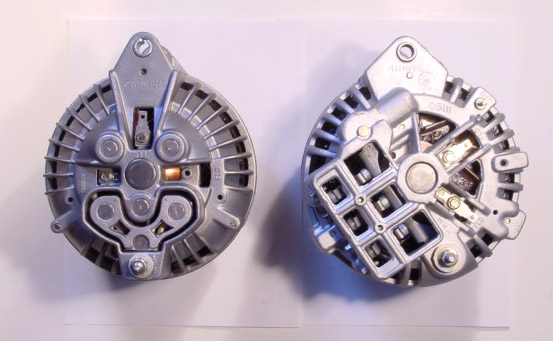Your voltage regulator is no longer in the circuit. Here's how the 70 and later systems work
Refer to the simplified diagram from MyMopar
The blue field wire comes direct from the switched 12V "ignition run" circuit. The 70/ later regulator GREEN wire controls sort of "the amount of ground" on the green wire.
YOU MUST HAVE an isolated field alternator (2 field terminals) in order to use the flat 70 and later regulator
You have three possibilities
1...Take a real good look at your alternator. Post a photo if you can. Some modern rebuilts are actually an isolated field unit that has one terminal grounded. In that case you can get different brushes and convert the unit, or maybe just some insulating washers and "unground" the brush
2...Replace the present alternator with a 72/ later (called a squareback, do not accept the older "roundback) and hook things up correctly
3...Keep the present alternator and buy a 69/ earlier replacement regulator
Below is a couple of different alternators. The one on the left is a special unit. This is an inferior old roundback, which originally came BOTH in 69/ earlier with grounded field, and 70 / later with isolated field. The one in this photo can be set up for EITHER and as shown has a grounded field
The right side photo is a "squareback" the better, newer design. All of these are "isolated field" (2 field terminals"
Below is a "rebuilder's hack." What this is, here, is an OEM 69/ earlier (grounded brush) with the grounded brush in place. The rebuilder has drilled an extra hole at 12 o' clock to insert an insulated brush and "convert" the unit to isolated field. These, for the most part, are a poor idea.



















